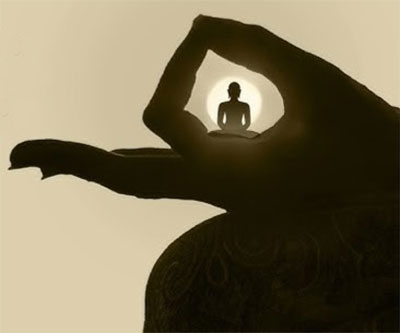Mauna, Maunum, Maunitva- all synonyms meaning silence, taciturnity, silence of the mind. To me, all these were just words from the dictionary until I attended the Maun Sadhava Shibir of Gurudev Sri Yasho Vijayji Maharajsaheb. Being an extremely talkative and friendly person, the thought of staying silent for six whole days was unfathomable. But having heard people talk about it, I registered myself for the Shibir.
Before embarking on the journey of self-realization, Gurudev asked everyone to be mindful of the following points.
1) To bring out the thoughts from the outside world to the inside world.
2) To be humble about Sadhana that is taken up while keeping a check on the EGO.
3) To think that everyone is good, the only bad person is ME.
4) Religious activities done should be in accordance with the scriptures.
5) Guru should affirm and permit the Sadhana Path being followed (Aagna).
Gurudev explained beautifully that out of these five, Aagna is the most important in the process of self-realization. The only difference between the Parmatma (Arihant, Siddh) and any Aatma is the layer of karma. To break the karmic wall, one needs to take up Tap (fasting), Jap (chanting) and Kriya (action or deed). But these things need to be done with Aagna. When Aagna is taken spiritual seeker is showered with Prabhu Kripa which is the main ingredient needed in the fulfilment of the goal. It will also facilitate the complete surrender.
Before starting the actual meditation, a practical sadhana was prescribed to help control thoughts. Everyone was asked not to have any judgments about the food that is consumed. For example, everyone was asked to stay away from thoughts like, “this is tasty, I would have preferred a different vegetable, the Daal is bland ” while eating. To distract the mind from such thoughts everyone is asked to think of a Stavan or practice Gyata Drasta Bhav – (observe and know everything without getting connected to it). Gurudev quoted Maharishi Patanjali from Yog sutra – “Nirvichar has to be practiced so much that Vichar do not come at all”.
The meditation sadhana is divided in four stages:
1) Bhav Pranayam
2) Bhasya Jap
3) Manas Jap
4) Dhyan
1)Bhav Pranayam:
Here practitioners take slow deep breaths which would help them to calm down mentally. Everyone is surrounded by energy which is both positive and negative. Depending on every individual’s mental state they tend to absorb either positive or the negative vibes. For the first five minutes of waking up every morning, one needs to continuously be very positive which would help them tune to the positive energies around them and attract these energies throughout the day.
When someone wants to watch a certain program on tv, the person sets the channel. In the same way, each individual needs to program the mind to attract only positive vibrations and remove the negative vibrations from within. Inhale peace and exhale anger. Take in modesty, move away from ego.
2)Bhashya Jap:
Bhasya Jap is practiced by chanting the mantra “Tithiyara Me Pasiyantu”. This mantra, given by the Gandhars, has a dual effect. It slows down the thoughts within as well as electrifies the surroundings. It is said that the best meditation happens in a pyramid. The mantra plays the role of a pyramid here. The vibrations produced by the mantra hit the walls and create a shield. This in turn produces energy which helps to meditate.
3)Manas Jap:
Manas Jap is repeating the same mantra internally. No other thoughts, just the focus on the mantra being repeated. The mind, which is forever moving from one thought to another, will stabilise with the help of this mantra. Mind has only two activities – it is always thinking, and then gets tired and sleeps. At this stage, the mind is prepared for a third activity – to stop thinking and be at peace.
4)Dhyaan:
The conscious mind comprehends things in its own way. It is forever thinking, judging, and reacting about whatever is happening around. When with someone one may behave in a certain manner externally but internally the situation might be different. From childhood it has been fed ideas which it believes and follows. For example, many believe that more money equals to more happiness. Though it is a false statement, the conscious mind will not accept it easily. This conscious mind needs to be brought under control. Instead of being slaves to it, a person needs to rise and be the boss. Dhyaan is the activity that felicitates to put the conscious mind aside and realise the self.
Lord Shiva told Parvati “Surprise is the way to Yog”. When one gets surprised, the conscious mind steps aside for a few seconds. Tire it out or surprise it so that it steps aside, and real self emerges. A very good example for this is when someone is in a new place and gets up in the middle of the night, for a few seconds a person may get disoriented, and will not be able to comprehend as to where he/she is. That is exactly the moment where the conscious mind has stopped working for a few seconds. Very soon it will realise where it is. One needs to bring this stage into meditation, where the conscious mind has taken a back seat, so that one can tap into the eternal state.
The conscious mind has a very little capacity and can work only on one track- either something is good, or bad. Raag, Dwesh and Ahankar are imprinted on it so strongly that they even follow in the next birth. One needs to work on these vices. Raag can be stopped by experiencing Veetragta, to win over Dwesh, Sambhav is to be practiced, and Namrata is a remedy for Ahankar. Prayer to Prabhu should be to shower his blessings (Prabhu Kripa) to make one-self able to win over these vices. His blessings will act like a protective shield (Suraksha Kavach) to help one stay away from the vices and continue the path of self-realization.
Vyvahar sadhana will surely convert to Nischay sadhana if blessed by Prabhu Kripa and Guru Aagnya along with strong desire and continuous efforts towards the goal.
The Sanskrit scriptures describe the guru as “dispeller of darkness” (gu, “darkness,” and ru, “that which dispels”). During the Maun Shibir I realised that Pujya Gurudev Yasho Vijayji Maharajsaheb was the guru who can help me dispel the darkness. He knew exactly what was lacking in me and which path should be taken by me to overcome the flaws and move ahead on the path of self-realization.
All the above teachings were conveyed by him with so much love and keeping in mind the capabilities of participants. It felt like he knew exactly what was going on in each of our minds. He would answer all the questions arising in my mind without me even asking them.
These six days made me realise the potential of my willpower – “TO REMAIN SILENT”. I strongly believe this became possible only because of Prabhu Kripa and the blessings of Gurudev. It is said that a person’s internal state of mind is reflected in their handwriting. On the fourth day of sadhana I saw how true this statement was. While taking down notes, I could see that my handwriting had changed. It had become neat, and each word was clear and crisp. I thought it was someone else’s writing.
The biggest achievement in anyone’s spiritual journey is to meet the right guru and experience the grace of Prabhu. I believe Maun Antara Yatra made me achieve both.



Excellent article on meditation, very clearly explained and convincing. The author of this article has vividly explained her personal experience for the benefit of everyone.
The article of Anisha Shah was lucid and forthright in presentation. In a simple language, she had brought forth the essence of Meditation and made readers to understand it’s significance …..
Kudos to her maiden creative venture….
Looking forward from her more such creative work in the near future…..
God Bless Her!
Your point of view caught my eye and was very interesting. Thanks. I have a question for you.